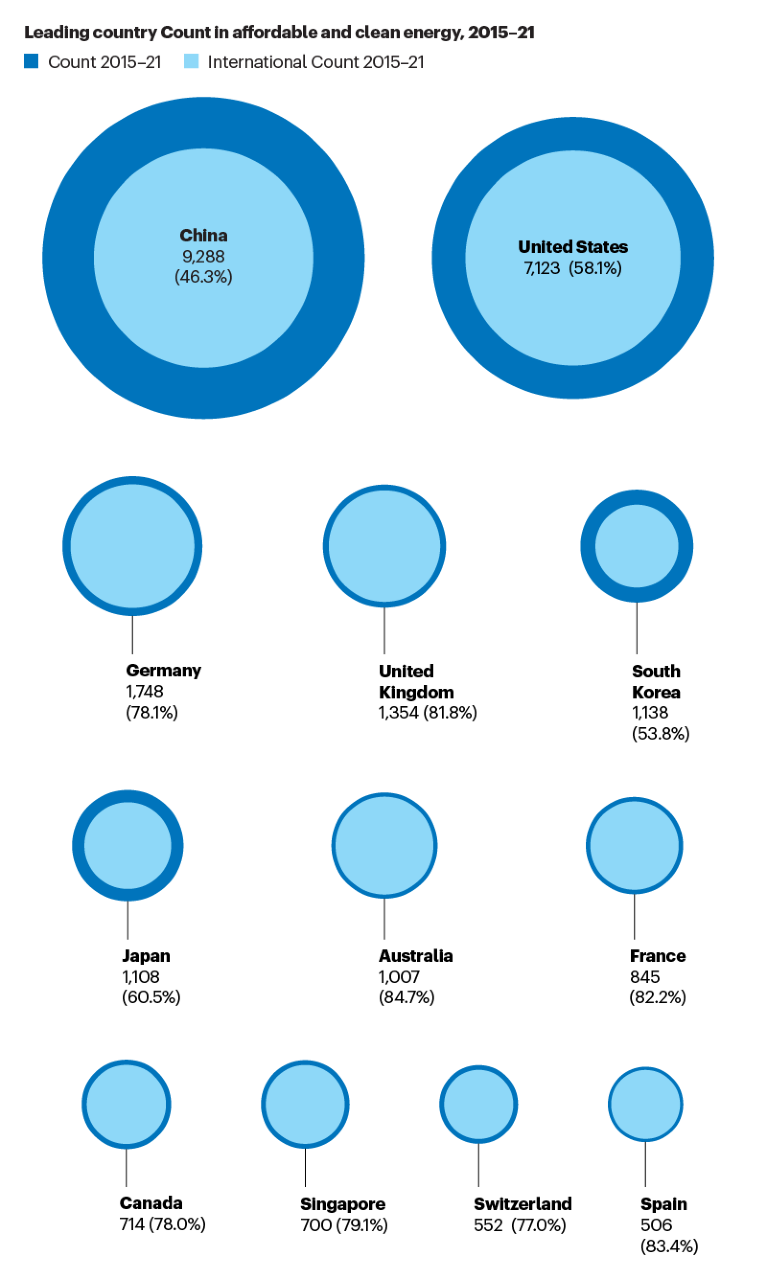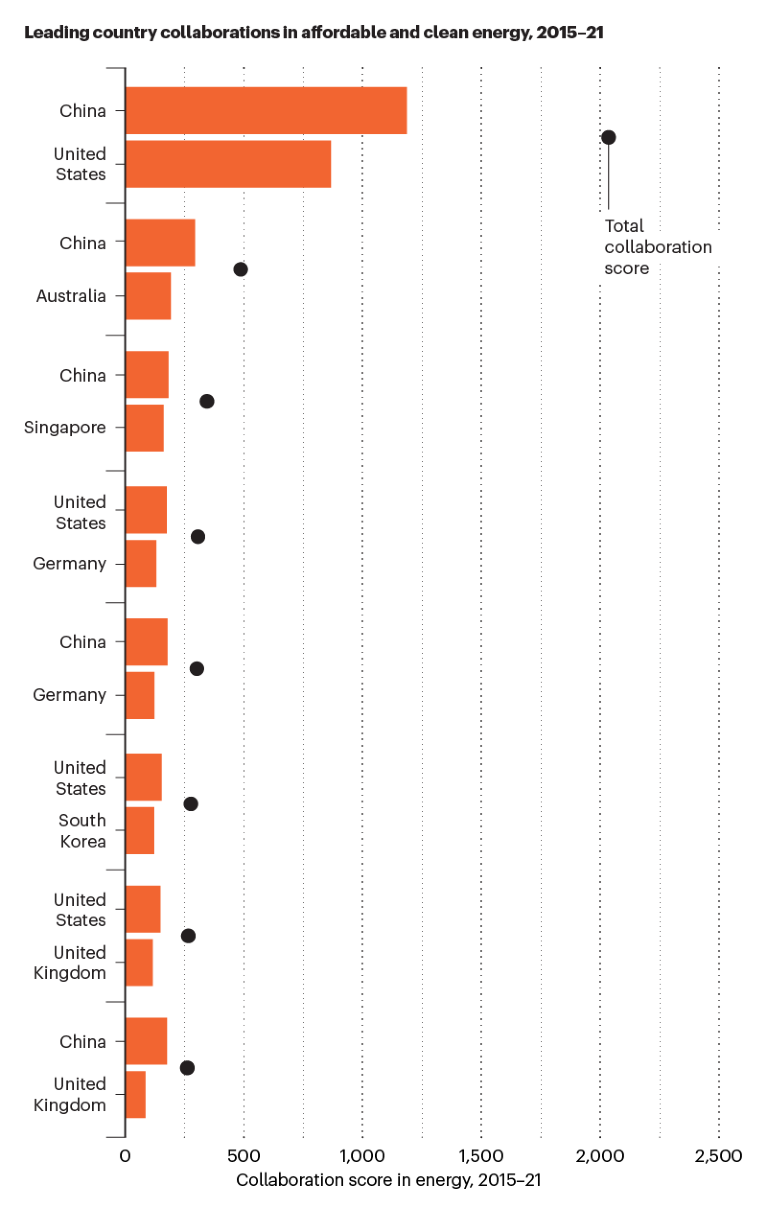Numbers can be deceiving. When looking at China’s level of international collaboration in the field of clean-energy research, a smaller proportion of its total article output (Count) comes from papers with an international collaborator compared with other countries in the leading 30. When looking at the location that other nations most frequently collaborate with, however, China is the most frequently cited partner. Both facts are simultaneously true thanks to the large number of articles that originate from China. This data visualization takes a broad and narrow look at collaborations in affordable and environmentally friendly energy research.
Calculating Count
The leading countries in the Nature Index by number of articles (Count) related to the United Nations’ Sustainable Development Goal (SDG) 7 (affordable and clean energy) are shown for the period 2015–21. Numbers in the circles show Count and the proportion of articles with international collaboration. More than 80% of articles published by France, Australia, Spain and the United Kingdom in the field had co-authors in other countries. China, by comparison, is the only country among the leading 30 to publish more articles without international co-authors than with them.

Source: Nature Index. Data analysis by Catherine Cheung; infographic by Tanner Maxwell and Bec Crew
Country collaborators
The leading country collaborations for 2015–21 in energy-related output, including total and bilateral collaboration scores (CS). Owing to its high article output, China appears frequently in top collaborations, despite having published less than half of its total output (46.3%) with international co-authors.

Source: Nature Index. Data analysis by Catherine Cheung; infographic by Tanner Maxwell and Bec Crew
Close connections
The three leading collaborations with international partners are shown for 2015–21. The Georgia Institute of Technology in Atlanta is a prolific American collaborator with Chinese institutions. It appears with five Chinese institutions in the leading 30 international collaborations.

Source: Nature Index. Data analysis by Catherine Cheung; infographic by Tanner Maxwell and Bec Crew

 Solving the energy crisis
Solving the energy crisis
 Data are key to proving green-energy benefits
Data are key to proving green-energy benefits
 The search for perovskite durability
The search for perovskite durability
 Exploring small nuclear to plug the energy gaps
Exploring small nuclear to plug the energy gaps
 Three scientists at the cutting edge of new energy solutions
Three scientists at the cutting edge of new energy solutions





![High carrier mobility along the [111] orientation in Cu2O photoelectrodes](https://media.nature.com/w140h79/springer-static/image/art%3A10.1038%2Fs41586-024-07273-8/MediaObjects/41586_2024_7273_Fig1_HTML.png)

